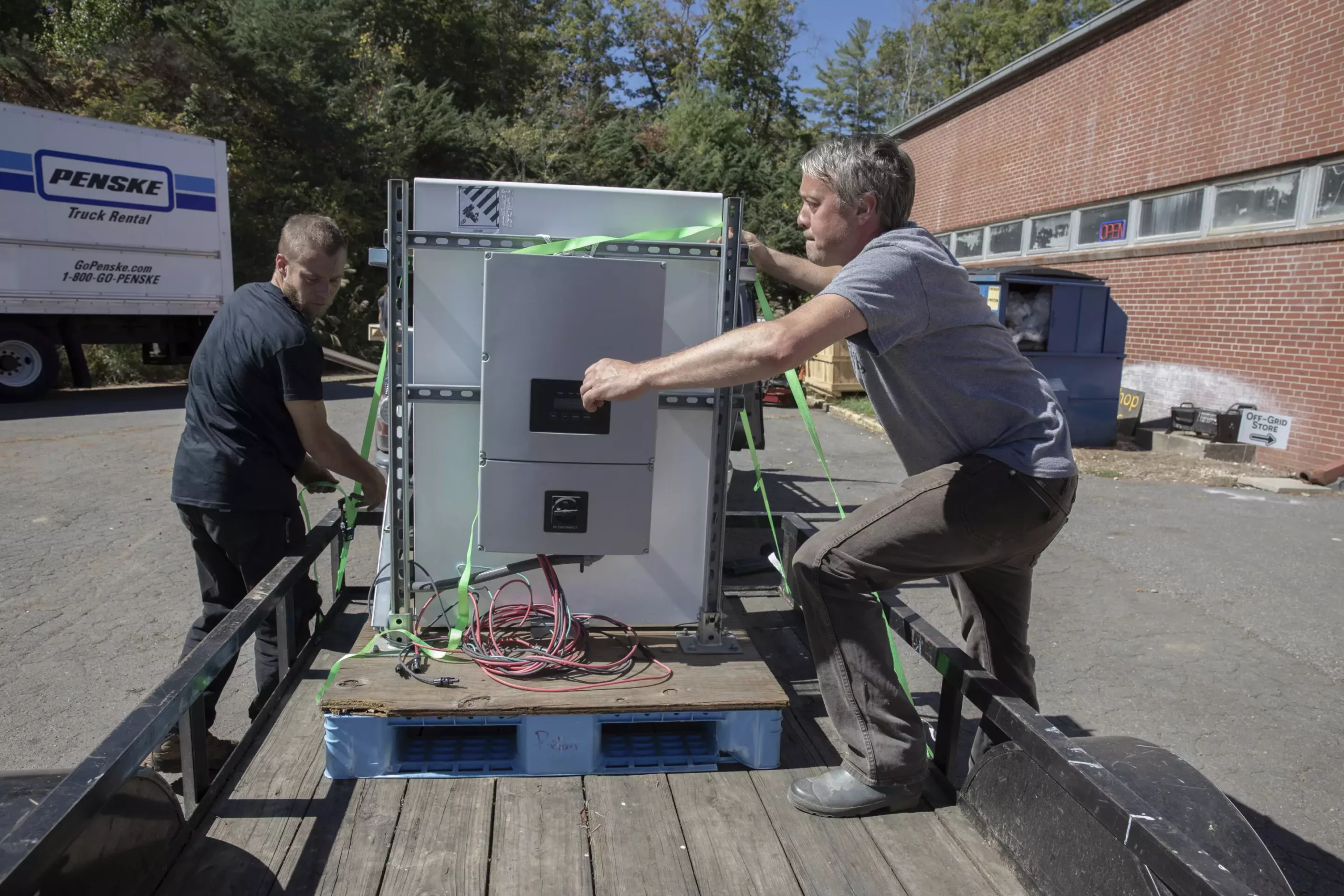In the wake of Hurricane Helene, which wreaked havoc across North Carolina’s mountainous regions, communities are facing unprecedented challenges. With over 43,000 residents still without electricity nearly two weeks after the storm’s devastation, the atmospheric silence of the mountains contrasts sharply with the unrelenting noise of gas-powered generators. For individuals like Bobby Renfro, a localized community figure in the remote hamlet of Tipton Hill, this sound is a disturbing reminder of persistence but also pain—a symbol of dependence amid dire circumstances.
As a retired railroad worker, Renfro took the initiative to create a community resource hub within a repurposed church. This hub serves as a refuge, facilitating the essential needs of neighbors displaced by the storm. However, the cost of survival has become a burden; the generator he purchased for $1,200 consumes rapidly increasing amounts of fuel sourced from volunteer efforts traveling long distances. This generator is not merely an appliance; it supplies critical power for refrigeration of insulin and other medical equipment that signifies life for many in this isolated locality. Yet, Renfro fears that outsiders remain oblivious to the severity of their plight, stuck in a geographical and emotional limbo.
The loss of electricity has a cascading effect that ripples through the lives of the affected individuals. Food and medicine require refrigeration, while essential appliances such as oxygen machines and well water pumps cannot run without power. Power outages have also rendered residents unable to charge their phones, isolating them from accessing information or federal disaster assistance. As the restoration efforts unfold with crews from across the nation, the reality remains that infrastructure rebuilding in the dense forested terrain is a laborious task. Historical vantage points like Duke Energy emphasize the scale of the recovery: for many, the process is no longer about simple repairs but instead about reconstructing entire systems from scratch.
The resilience observed among residents is commendable, but the use of generators poses risks of its own, including danger from fumes and the stark reality of their overall efficiency. Small generators, designed for limited operational periods, struggle under the burden of ongoing demand, revealing a clear need for a more sustainable solution.
Fortunately, rays of hope are piercing through the clouds of despair. Amid the fray, a collaborative effort is evolving that employs solar innovations to address shortfalls in power provision. Organizations such as the Footprint Project are stepping up by deploying cutting-edge solar technology that yields cleaner energy options. Renfro is one of the first beneficiaries of a new solar generator; a scalable solution equipped with six solar panels, converting sunlight into energy to supplement or replace his noisy generator.
This initiative, driven by renewable energy advocates, seeks to establish mobile infrastructures across affected areas. With their concerted efforts, they are flooding affected communities with solar generators alongside frameworks designed to harvest water vapor from the air—true innovations in the face of adversity. This pivot towards sustainability suggests a future where disaster response can evolve not only to restore power but also protect our environment against the detrimental effects of fuel reliance.
Volunteers are becoming the backbones of this relief effort, mobilizing resources and community solidarity. From the warehouse operations in Mars Hill, led by the passionate husband-and-wife duo Will Heegaard and Jamie Swezey of the Footprint Project, to individual efforts by locals providing support to neighbors, hope is being restored one act of kindness at a time. The critical synergy between community members and relief organizations emphasizes the significance of collective action during times of crisis.
In addition to delivering essential solar equipment, volunteers are assisting in powering communication systems like Julie Wiggins’ Starlink, which connects families to the outside world amidst treacherous terrain. The shared stories of hardship coupled with resourcefulness illustrate a community’s determination to overcome adversity, where ingenuity and cooperation reign supreme.
The aftermath of Hurricane Helene conveys a serious message about vulnerability in the face of natural disasters. As recovery efforts continue, the need for a proactive approach to disaster preparedness has never been clearer. While the immediate demand for power is pressing, long-term strategic planning around
sustainable energy sources and community resilience must take precedence. Current efforts highlight the fact that many residents will require assistance well beyond the restoration of electrical utilities.
The community’s journey towards recovery showcases an evolving narrative—one that pits the urgency of humanitarian aid against the backdrop of climate change challenges. As more volunteers and nonprofits rally together to respond to pressing needs, it is evident that the spirit of determination, combined with sustainable solutions, will be paramount in overcoming both current and future adversities.

